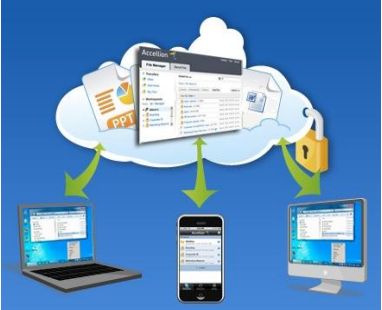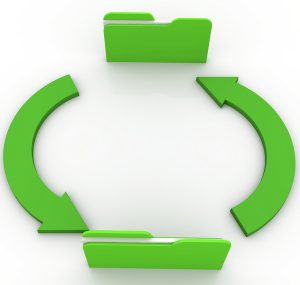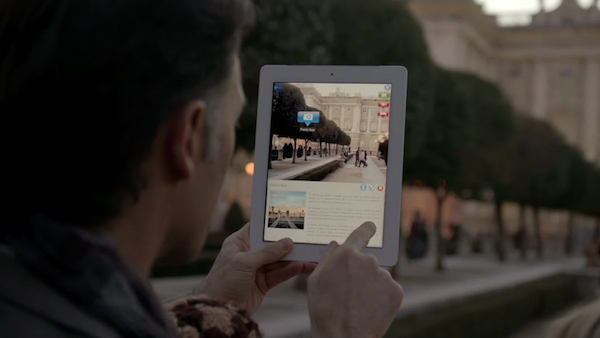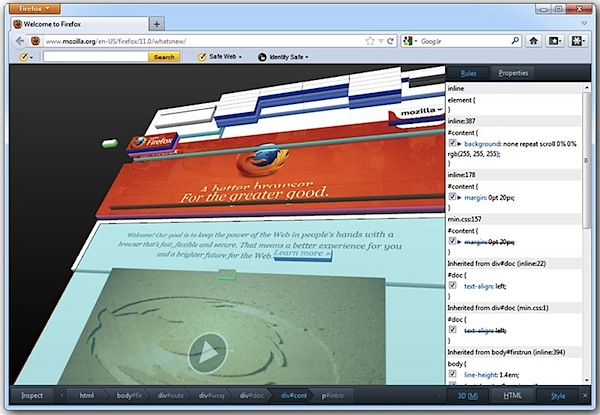
Today, Gartner made a bold prediction about changing computing eras, claiming that the cloud will replace the PC as the "center of users' digital lives" by 2014. Welcome to the cloud-connected device era.
The implications are staggering, if Gartner is right, and keep in mind the firm's core customers are enterprises not consumers -- hence the audience for this staggering prediction, which isn't so unbelievable. Computing and informational relevance has been shifting away from the PC to cloud-connected devices for nearly a decade. I started earnestly talking and writing about it in 2005, when still an analyst at Jupiter Research. Like other trends, this one started slowly and now accelerates quickly.
"Major trends in client computing have shifted the market away from a focus on personal computers to a broader device perspective that includes smartphones, tablets and other consumer devices", Steve Kleynhans, Gartner research vice president, says. "Emerging cloud services will become the glue that connects the web of devices that users choose to access during the different aspects of their daily life".
Shifting Relevancy
The PC's relevance is rapidly diminishing, keeping with a long-standing trend of technological displacement -- a centuries old and fairly consistent phenomenon. Something new comes along and erodes interest in something else. The pace is slow at first reaching a crescendo, where there is a dramatic shift to the new from the old occurring within a short time span. Some older technologies continue for a time and disappear, while many others remain but in new niches. Some recent, and not-too-hard-to-grasp, examples:
- Cottage industries and factories
- Horse drawn carriages and trains
- Trains and automobiles
- Telegraphs and telephones
- Mainframes and PCs
- Digital music downloads and CDs
As I explained in February 2011 post "The PC era is over" and May 2010 analysis "The Windows era is over", the personal computer won't disappear just diminish in relevance. But we're reaching a point of rapid change, much like the PC and mainframes in the 1980s.
Computing and informational relevance shifted from the mainframe to the PC in part because of lower costs and greater availability. PCs cost much less than mainframes and made information more available, essentially more mobile, to more people. Similar transition is happening today, as cloud-connected mobile devices make more information available to more people in more places than do PCs. Computing and informational relevance is shifting once again. The mainframe didn't go away because of the PC era, the mainframe's relevancy simply declined. The PC won't go away, even though this story has a R.I.P. headline, but it's relevancy is declining -- and at accelerating pace. Enterprise adoption of cloud-connected device services is the tipping point.
"In this new world, the specifics of devices will become less important for the organization to worry about", Kleynhans says. "Users will use a collection of devices, with the PC remaining one of many options, but no one device will be the primary hub. Rather, the personal cloud will take on that role. Access to the cloud and the content stored or shared in the cloud will be managed and secured, rather than solely focusing on the device itself".
Trends Accelerating Change
In its assessment of changing relevancy, Gartner identifies five trends:
1. Consumerization of IT, which while a hot, current topic, has been going on almost as long I've written about technology. The difference: More of the workforce is technologically savvy and demands better tech to get the job done.
Problem I see: Workers are killing themselves, by further blurring the line between home and work time and putting themselves in role of always being available.
2. Virtualization accelerates the transition from the legacy PC era to its cloud-connected device successor. Enterprises can move forward without being held back by past investments.
3. Big data. In the PC era, software applications define businesses' technology investment. The cloud-connected era is information-centric, which is exposed cross-platform across many different devices regardless of applications. Data, and access to it, matters more.
4. Self-service cloud, which provides users more control over how they manage information and more access to it. Gartner says the "impacts for IT infrastructures are stunning".
5. Anytime, anywhere, on-anything informational access is just too compelling. The cloud solves security and privacy problems businesses face today, as workers haul confidential information on laptops and other mobile devices outside the firewall's confines. Meanwhile there is commingling of personal and professional data on PCs, smartphones and tablets. The cloud fixes that problem, too, and allows businesses to maximize their return on investment across multiple devices.
In the Year 2005
Perhaps it's no coincidence that 2005, the year Microsoft originally planned to release Windows Vista, marks the beginning of dramatic changes affecting the PC's future relevance. Many of the most popular, disruptive technologies in use today didn't exist before YouTube opened to the public in November 2005. Google bought the service 11 months later. In August 2005, Google bought Android; while seemingly innocuous then, it is hugely important to cloud-connected devices today. Google activates 850,000 Androids everyday.
In 2006, Facebook opened to the public and Twitter launched. Nearly all popular cloud services followed. Then came iPhone in June 2007, Apple's app store in July 2008, the first Android phone later that year followed by Chrome 1.0. Today, Facebook is the leading social network (with 850 million users); iPhone is the top-selling smartphone; Android is the global leading smartphone OS; and Chrome is the No. 3 most-used web browser. All this happened since 2005.
"Many call this era the post-PC era, but it isn't really about being 'after' the PC, but rather about a new style of personal computing that frees individuals to use computing in fundamentally new ways to improve multiple aspects of their work and personal lives", Kleynhans says. He is absolutely right. I've called the so-called post-PC era the cloud-connected device era since 2006. The personal computer is but one of the devices, rather than the central one. The cloud matters more.
I explained the importance to enterprises in March 2008 post "Do IT simply with sync". Synchronization is the glue sticking together the cloud and devices. Since that post, Apple, Google and Microsoft all advanced mature sync platforms.
Last week I asked: "Does iPad make the PC obsolete?" The new iPad, with its high-resolution display, is a metaphor for all cloud-connected devices. It's a symbol for how non-PC devices increase in relevance, as the PC diminishes.
You can believe Gartner or not. I'm a believer -- long ago.
Photo Credit: Fer Gregory/Shutterstock


 There are
There are  Security firm Bitdefender has launched
Security firm Bitdefender has launched  European Union antitrust chief Joaquin Almunia says that the Competition Commission is open to a settlement with publishers in the increasingly high-profile
European Union antitrust chief Joaquin Almunia says that the Competition Commission is open to a settlement with publishers in the increasingly high-profile 
 If you’re looking for a free partitioning tool then there’s no shortage of competition around, but you need to choose carefully. And this is particularly true if you’re considering free versions of commercial products, which often include annoying restrictions and limitations in an effort to persuade you to upgrade.
If you’re looking for a free partitioning tool then there’s no shortage of competition around, but you need to choose carefully. And this is particularly true if you’re considering free versions of commercial products, which often include annoying restrictions and limitations in an effort to persuade you to upgrade. When you need to distribute a set of files then it can often be useful to give them all the same timestamp. In part this makes sure you’re not inadvertently giving away information (maybe you don’t want people to know that a group of files in some new project was actually grabbed from something you did years earlier, for instance). But it’s also neater, and makes it easier to identify the file later. If you need to know which version of a document someone has, say, then just being given its date, which is very simple to find, may be enough.
When you need to distribute a set of files then it can often be useful to give them all the same timestamp. In part this makes sure you’re not inadvertently giving away information (maybe you don’t want people to know that a group of files in some new project was actually grabbed from something you did years earlier, for instance). But it’s also neater, and makes it easier to identify the file later. If you need to know which version of a document someone has, say, then just being given its date, which is very simple to find, may be enough.